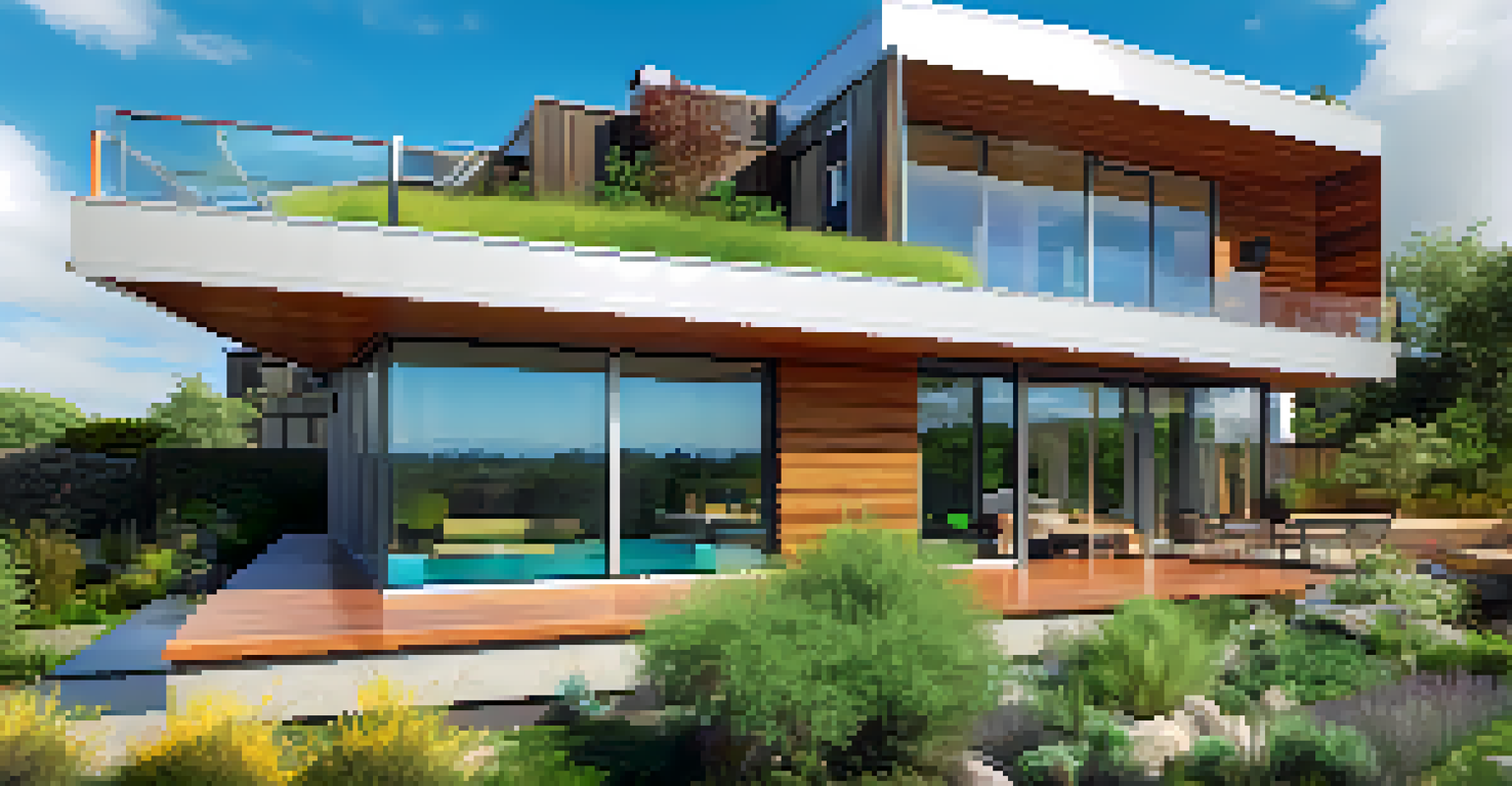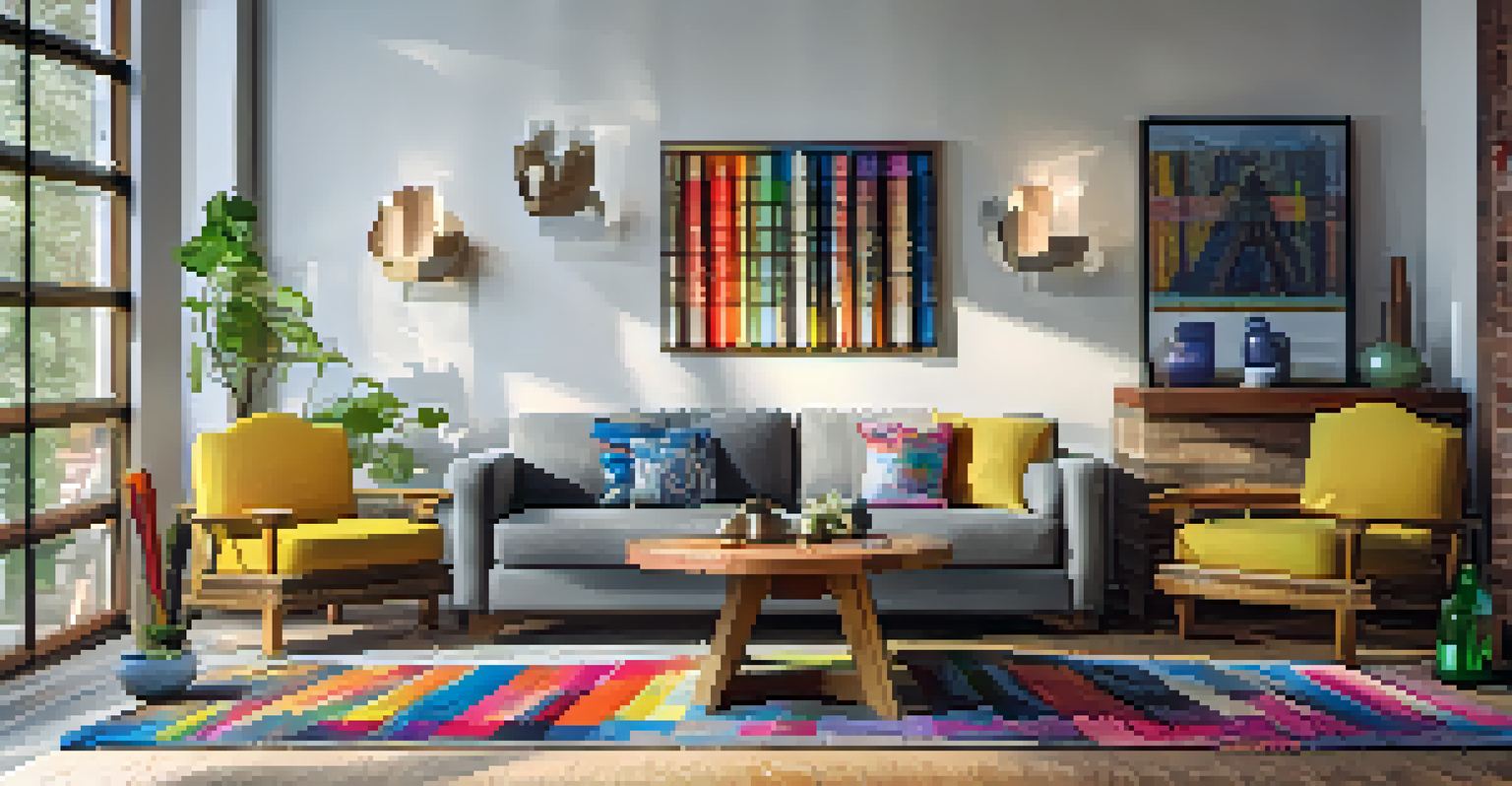Understanding the Circular Economy in Home Design

What is the Circular Economy and Why It Matters
The circular economy is a model that contrasts with the traditional linear economy, which follows the 'take, make, dispose' approach. In a circular economy, we focus on reusing, recycling, and reducing waste, promoting sustainability in every step. This shift is crucial as it helps conserve resources, reduce environmental impact, and create economic opportunities.
The greatest threat to our planet is the belief that someone else will save it.
Imagine if we treated materials like guests at a party—ensuring they are not just used and forgotten but rather invited back for future events. This mindset encourages designers to think creatively about how to repurpose materials and products, making sustainability the norm rather than the exception. The circular economy isn't just a trend; it’s a necessity for a healthier planet.
As homeowners and designers embrace this approach, we can expect to see innovative solutions emerge, such as multifunctional furniture and eco-friendly materials. By prioritizing these principles, we contribute to a more sustainable future, making responsible choices that benefit both our homes and the environment.
Key Principles of Circular Design in Homes
Circular design emphasizes several key principles: durability, repairability, and recyclability. These principles guide designers in creating homes that are not only aesthetically pleasing but also functional and long-lasting. For instance, selecting high-quality materials that withstand the test of time means fewer replacements and less waste.

Another important aspect is designing for disassembly. This means creating products that can be easily taken apart at the end of their life cycle, allowing materials to be reused or recycled. Think of a puzzle where each piece can be separated and used in new ways—this flexibility reduces landfill waste and maximizes resource use.
Circular Economy Promotes Sustainability
The circular economy encourages reusing and recycling materials, reducing waste and fostering sustainable practices.
By incorporating these principles into home design, we can create spaces that adapt to changing needs and reduce our ecological footprint. The goal is to create homes that serve us well while also being kind to the planet, ensuring future generations can enjoy a healthy environment.
Benefits of Adopting Circular Economy in Home Design
Adopting a circular economy approach in home design offers numerous benefits, both environmentally and economically. For one, it minimizes waste by encouraging the use of materials that can be reused or recycled. This not only helps reduce landfill burden but also conserves natural resources, which is a win-win for everyone.
We do not inherit the earth from our ancestors, we borrow it from our children.
Additionally, circular design can lead to cost savings over time. For example, investing in durable furniture may have a higher upfront cost, but it will save money in the long run by reducing the need for frequent replacements. Homeowners can feel good about their choices while also enjoying the financial benefits that come from sustainable investments.
Moreover, embracing this model can enhance the overall aesthetic of a home. By using unique, upcycled materials or custom pieces, homeowners can create spaces that showcase their personality while making a positive impact on the environment. The result is a home that is both beautiful and responsible.
Implementing Circular Design in Your Home
Implementing circular design principles in your home doesn’t have to be overwhelming. Start by assessing your current belongings and identifying items that can be repurposed or donated. This decluttering not only creates a more organized space but also allows you to contribute to a circular economy by giving items a second life.
Next, consider incorporating sustainable materials into your home renovation projects. For example, opt for reclaimed wood or eco-friendly paints that are free from harmful chemicals. By making these mindful choices, you create a healthier living environment while supporting sustainable practices.
Key Principles Enhance Home Design
Durability, repairability, and recyclability are essential principles that guide the creation of functional and long-lasting homes.
Finally, think about how you can design for flexibility and longevity. Choose furniture that serves multiple purposes or can be easily updated with new upholstery. By focusing on versatility and quality, you can create a home that adapts to your lifestyle while minimizing waste.
Case Studies: Successful Circular Home Designs
Several innovative projects around the world exemplify successful circular home designs. For instance, the 'House of Tomorrow' in the Netherlands showcases how sustainable materials can be combined with cutting-edge technology. This home not only minimizes waste but also generates its own energy, serving as a model for future developments.
Another inspiring example is the 'Circular House' built in New York, which uses reclaimed materials and features a design that encourages recycling. The architects focused on creating a living space that not only meets the needs of its occupants but also respects the environment. Such projects highlight the potential for creativity within the circular economy.
These case studies inspire homeowners and designers alike, demonstrating that circular design is not just theoretical but practical and achievable. They remind us that sustainable living can be beautiful, functional, and beneficial for the planet.
Challenges in Adopting Circular Economy Practices
Despite its many advantages, adopting circular economy practices in home design comes with challenges. One significant hurdle is the initial cost of sustainable materials and products, which can deter homeowners from making the switch. However, it's essential to view these costs as investments that will pay off over time through durability and energy savings.
Another challenge is the lack of awareness about circular design principles among consumers and designers alike. Education plays a crucial role in shifting perceptions and encouraging sustainable practices. By raising awareness about the benefits of circular design, we can inspire more people to embrace these concepts in their homes.
Adoption Faces Challenges Ahead
While adopting circular economy practices offers numerous benefits, challenges such as initial costs and lack of awareness persist.
Additionally, the infrastructure for recycling and repurposing materials is still developing in many areas. This can make it difficult to find local resources for sustainable design. However, as demand for circular products grows, so too will the resources available, paving the way for a more sustainable future.
The Future of Circular Economy in Home Design
The future of circular economy in home design looks promising, with increasing awareness and demand for sustainable practices. As more homeowners prioritize eco-friendly options, designers and manufacturers are likely to innovate and provide a wider array of sustainable products. This shift will help normalize circular design, making it more accessible to everyone.
Technological advancements will also play a crucial role in this evolution. For example, the rise of smart home technology can lead to more efficient energy use and waste reduction. By integrating technology with circular design principles, we can create homes that are not only sustainable but also smart and adaptable to modern lifestyles.

Ultimately, the shift towards a circular economy in home design signifies a broader change in our approach to consumption. As we redefine our relationship with materials and resources, we can build a future where homes are not just places to live but also integral parts of a sustainable world.